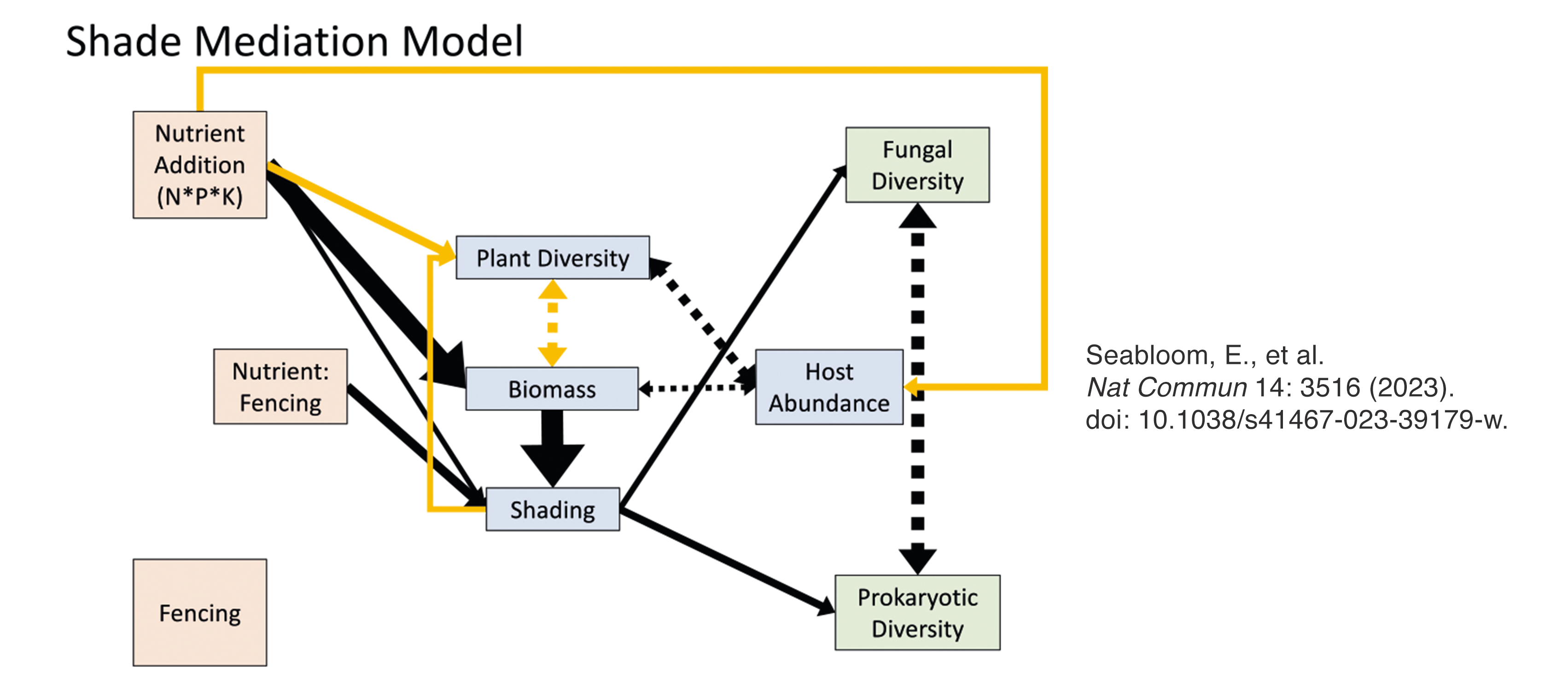The Nutrient Network (https://nutnet.org/), aka NutNet, is a global collaborative research group studying two of the most important effects of humans on grassland ecosystems: alteration of herbivore (i.e., grazing animal) density and increased supply of nutrients such as nitrogen and phosphorus. To quantify these effects, NutNet scientists are conducting a globally replicated, long-term ecological experiment, which is occurring at over 130 sites worldwide. NutNet is coordinated by MSI PIs Professor Eric Seabloom and Professor Elizabeth Borer, both of the Department of Ecology, Evolution and Behavior in the College of Biological Sciences (CBS), who are also NutNet co-founders.
Recent papers by NutNet researchers:
- Researchers studied the relationship between plant diversity and spatial variability of plant biomass production in 83 grasslands.
- Daleo, P., et al. Environmental heterogeneity modulates the effect of plant diversity on the spatial variability of grassland biomass. Nature Communications 14: 1809 (2023). doi: 10.1038/s41467-023-37395-y. (link: )
- Researchers have brought tools from economics to ecology and used them to evaluate how plant species diversity affects grassland biomass production.
- Dee, L.E., et al. Clarifying the effect of biodiversity on productivity in natural ecosystems with longitudinal data and methods for causal inference. Nature Communications 14: 2607. doi: 10.1038/s41467-023-37194-5. (link: )
- Researchers found that the diversity of the microbiome (the diversity of all the microbes inhabiting an organism) varied predictably with the environment across more than a dozen species at 23 grassland sites worldwide.
- Seabloom, E., et al. Globally consistent response of plant microbiome diversity across hosts and continents to soil nutrients and herbivores. Nature Communications 14: 3516 (2023). doi: 10.1038/s41467-023-39179-w. (link: )
- Researchers found that fertilization consistently reduced the diversity of soil seed banks in grasslands on four continents.
- Eskelinen, A., et al. Herbivory and nutrients shape grassland soil seed banks. Nature Communications 14: 3949 (2023). doi: 10.1038/s41467-023-39677-x.
- Members of the NutNet collaboration developed a new framework for writing papers with numerous authors, providing a method that reduces barriers to meaningful participation for all authors.
- Borer, E.T., et al. Writing a massively multi-authored paper: Overcoming barriers to meaningful authorship for all. Methods in Ecology and Evolution 14(6): 1432 (2023). doi: 10.1111/2041-210X.14096.
- A story about this paper appears on the U of M News website: Inclusive authorship reduces barriers to participation.
MSI supports NutNet by helping manage and maintain plant, soil, climate, and genomics data collected in the globally distributed NutNet experiment.
Image description: Nutrient and fencing effects on leaf-scale endophyte diversity are mediated by biomass effects on shade. Arrow width represents magnitude of standardized coefficients. Double-headed, dashed arrows indicate relationships modeled as correlated errors. Black arrows represent positive coefficients and orange arrows represent negative coefficients. All tests are two-tailed. (Image and description, Seabloom, E., et al. Nat Commun 14: 3516 (2023). doi: 10.1038/s41467-023-39179-w.)
